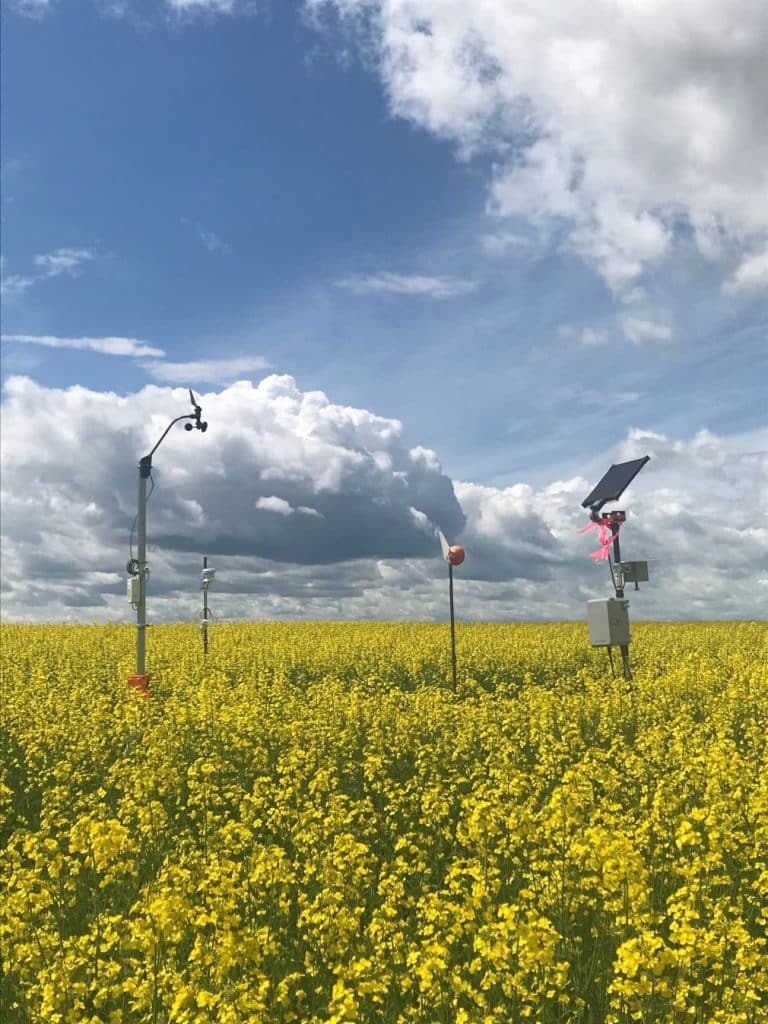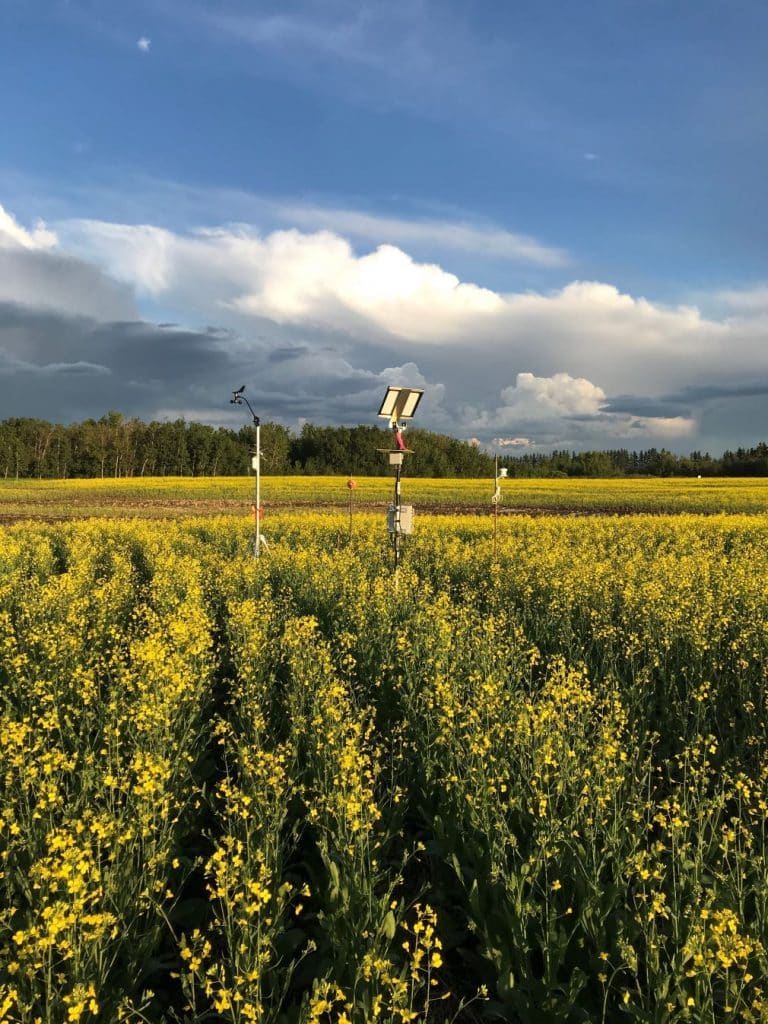Key Result
Frequent occurrence during the flowering period of a minimum of 0.0001 nanograms of S. sclerotiorum DNA per petal or per cubic metre per hour combined with relative humidity over 80% and cooler temperatures are expected to result in a disease incidence greater than 10 to 15 per cent. In this situation, fungicide is recommended, depending on commodity price and expected yield.
Project Summary
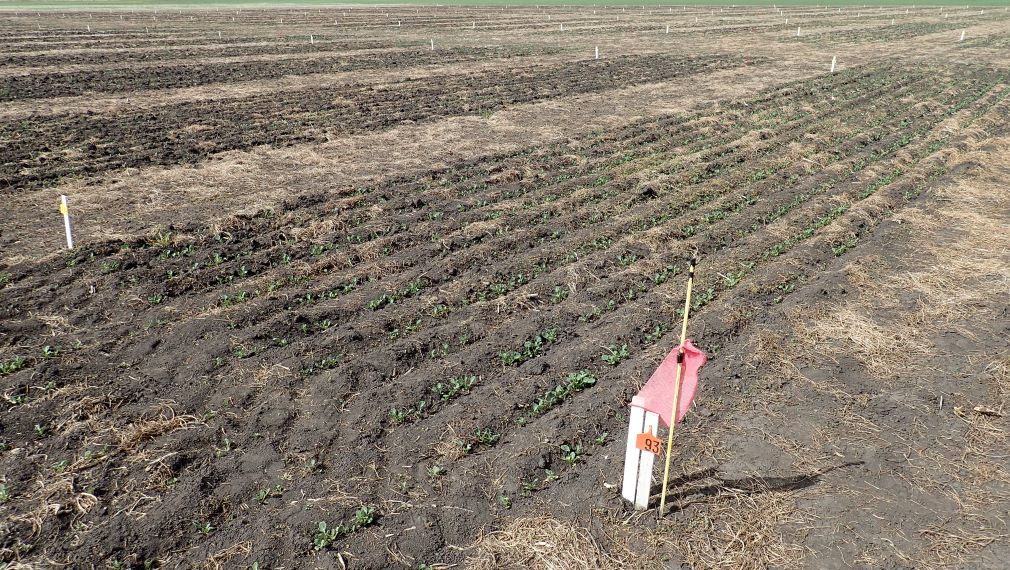
Overview
Sclerotinia stem rot is an important factor influencing long-term production and economic stability for canola producers. However, outbreaks of stem rot can be variable and as a consequence fungicide application decisions are often difficult to make.
The focus of this research was to improve management practices for Sclerotinia sclerotiorum by developing a better understanding of the relationship between inoculum availability and environmental conditions before and during flowering, and how this impacts stem rot risk and fungicide response. Researchers looked at factors (seeding rate) that influence crop development, as well as variability in flowering and the resulting fungicide efficacy at different canola growth stages. They also evaluated fungicide efficacy when applied as a single early application or as dual applications at different flowering stages, while aiming to refine the use of qPCR analysis and investigate the use of spore traps to assess inoculum load before and during flowering.
Objectives
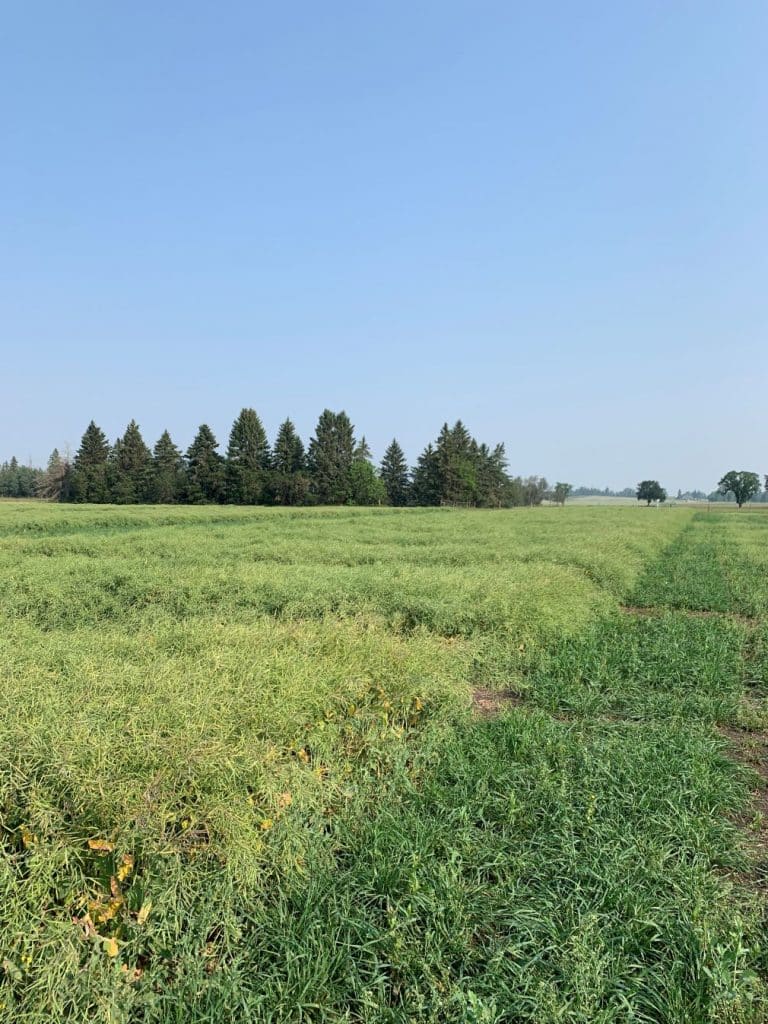
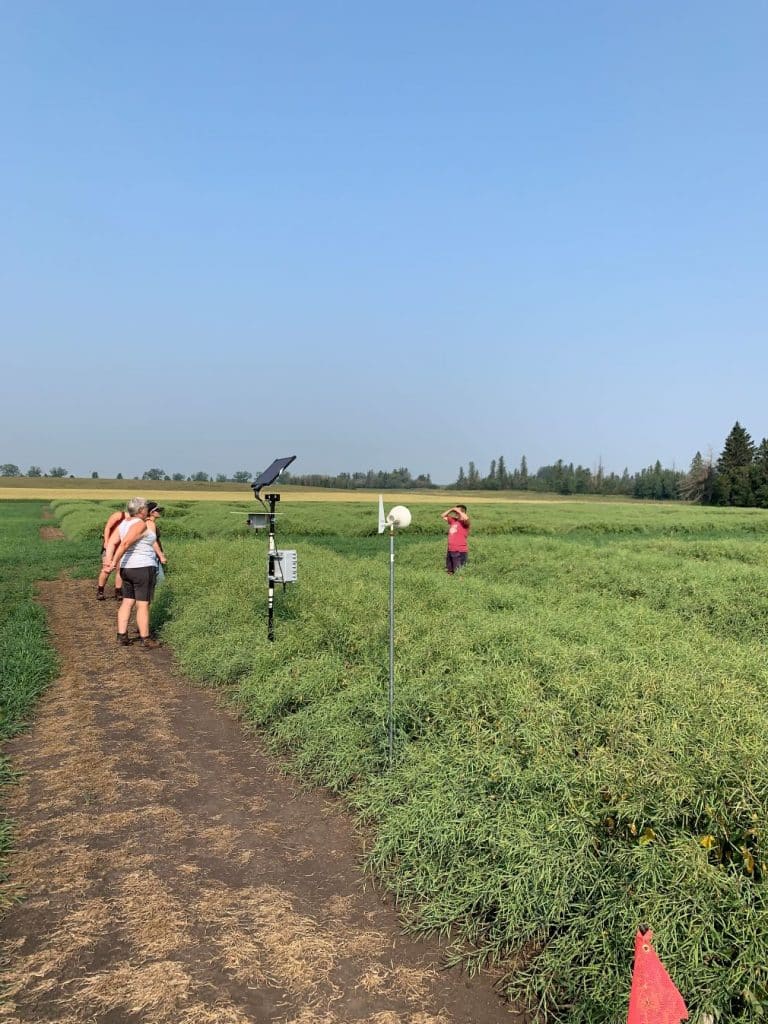
The specific project objectives are:
- Refining the use of qPCR analysis and investigating the potential of utilizing spore traps instead of canola petals;
- Understanding the role and impact of RH, rainfall, and temperature on inoculum production and disease development;
- Evaluating the efficacy of very early applications alone or in conjunction with later applications of fungicide for management of stem rot;
- Develop a better understanding of factors (e.g. seeding rate) that influence crop development and variability in flowering and how this influences fungicide response at various crop growth stages;
- Develop a better understanding of how inoculum availability and environmental conditions prior to and during the flowering period influence stem rot risk and the efficacy of fungicide application.
Field trials
Conditions in 2019 were favourable for stem rot. In general, final stem rot levels generally reflected spore loads as well as relative humidity and temperature conditions. Where fungicide responses occurred, better efficacy generally reflected peak spore loads and the occurrence of favourable weather conditions. Unfortunately, in 2020 the fungicide trial experiments were postponed due to COVID-19 and will be conducted during the summer of 2022, while the 2021 field season should progress as normal. However, Eleanor McBain was able to continue her M.Sc. project work in the Fort Saskatchewan and Legal region of Alberta in 2020.
Results
Results from this study emphasize that without a minimum threshold of spores and constant high relative humidity, risk from sclerotinia is low and fungicide is not economical.
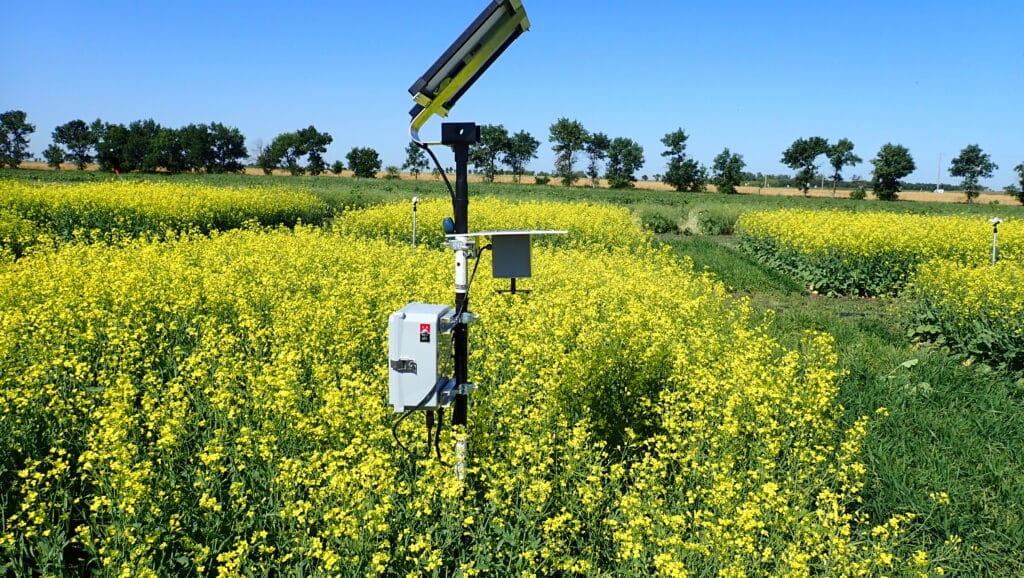
Given weather conditions and relatively low inoculum levels, most sites showed limited disease development and no effects of fungicide timing and their interaction on yield. Trial sites at Outlook, Saskatchewan and Brooks, Alberta were irrigated yet inoculum loads and weather conditions were not overly favourable for stem rot development. Perhaps for these locations where warmer dry conditions normally prevail, the addition of irrigation wasn’t sufficient enough to substantially increase the risk of stem rot of canola.
Inoculum load
This study indicated that spore tests that quantify spore load, not just the presence of spores, will more accurately identify the risk. Frequent occurrence during the flowering period of a minimum of 0.0001 nanograms of S. sclerotiorum DNA (from spores) per petal or per cubic metre of air per hour combined with favourable moisture conditions (see relative humidity below) and cooler temperatures are expected to result in a disease incidence greater than 10 to 15 per cent. In this situation, fungicide is recommended depending on commodity price and expected yield. Overall, no to low inoculum levels were associated with limited stem rot risk.
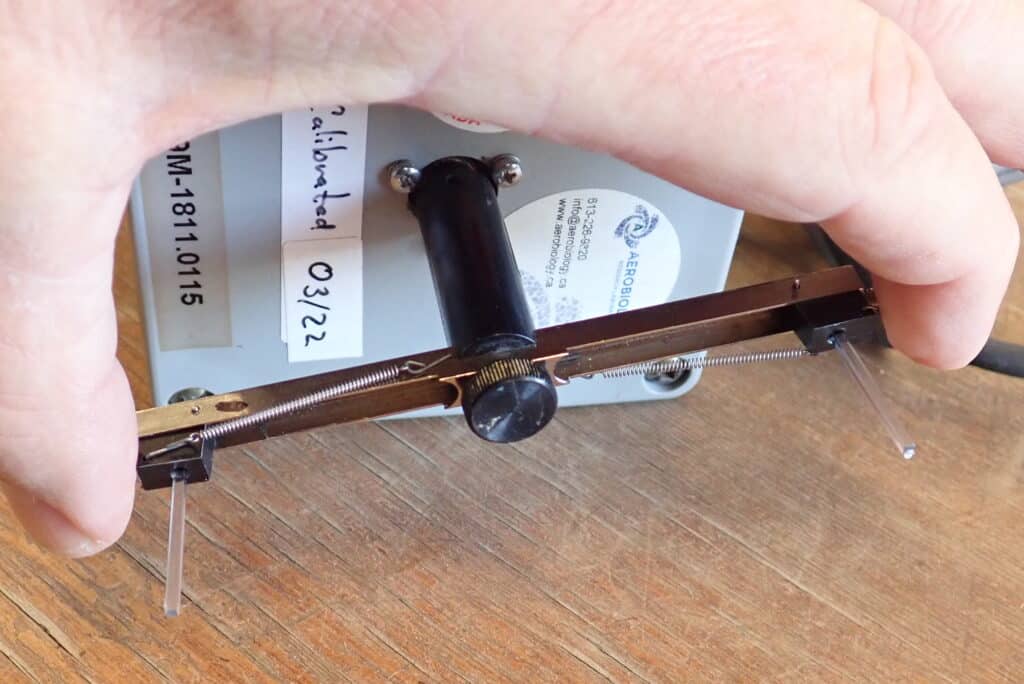
Rotorod testers are accurate tools that collect spores per cubic metre of air per hour. They could be deployed as regional monitoring tools, providing a preflowering indication of risk, but are not practical for on-farm use. Petal tests provide quantitative DNA and turn around time is fairly quick, but these tests have to be done right around the time fields need to be sprayed. The Spornado also provides an earlier warning. Refinements to Spornado’s “detected” category to provide more quantitative results will improve its ability to assess stem rot risk and potential need for fungicide application.
Relative humidity
Results from this study supported previous work showing that relative humidity (RH) greater than 80 per cent was associated with increased stem rot incidence, while RH below 80 per cent was associated with lower disease incidence that would typically not require a fungicide application. RH of 80 per cent or higher is required for at least 21 hours per day to elevate disease risk. A few hours per day with lower RH seems to be enough to disrupt infection.
Timing trials for this study (objectives 3 and 4) did not come to any conclusions because disease levels were too low.
Conclusion
Overall results in 2022 and 2021, and from some sites in 2019, indicate that when the risk of stem rot is low based on weather and inoculum conditions, fungicide application is not needed and provides no crop productivity or economic benefit in terms of yield.
This research also concluded that a relative humidity of >80% and a minimum of 0.0001 nanograms of S. sclerotiorum DNA per canola petal or per cubic meter of air per hour during early flowering would likely result in disease incidence of >15%, at which fungicide application is generally recommended.
